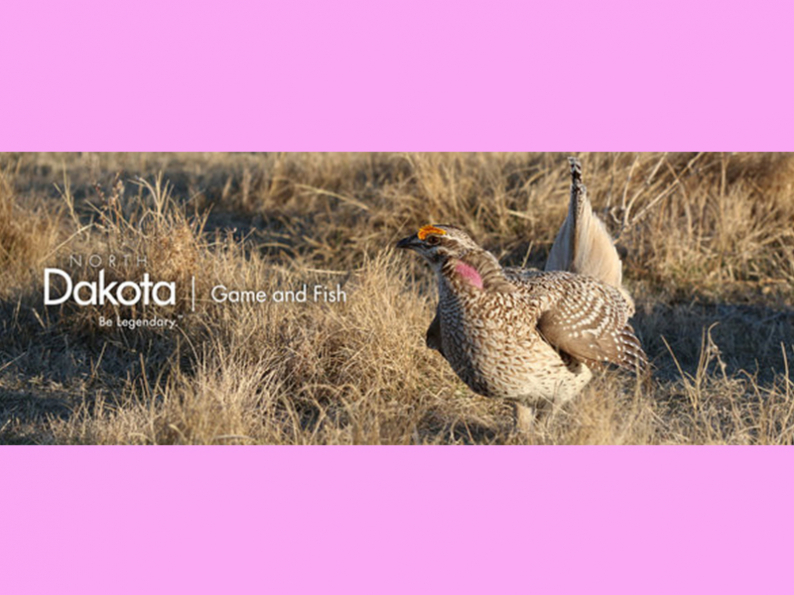
Deer Test Positive for CWD
Eight deer taken during the 2019 North Dakota deer gun season tested positive for chronic wasting disease, according to Dr. Charlie Bahnson, wildlife veterinarian for the North Dakota Game and Fish Department.
All were antlered deer taken from areas previously known to have CWD – six from unit 3F2 and two from 3A1. Bahnson said six of the eight were mule deer, with two whitetails from unit 3F2. CWD was not detected in any deer harvested in the eastern portion of the state where hunter-harvested surveillance was conducted last fall. In addition, no elk or moose tested positive.
“Only about 15% of hunters submit heads for testing in units where CWD has been found, so the infection rate is more meaningful than the raw number of positive animals found,” Bahnson said. “Approximately 3% of harvested mule deer were infected with CWD in unit 3F2, and roughly 2% in unit 3A1. Our infection rate in whitetails in 3F2 was about 1%.
“Overall,” he continued, “we could probably live with these current infection rates long-term, but they suggest an upward trend and we’ve certainly seen an expansion in the known distribution of the disease. We need to continue to try to limit the spread within our herds as best as we can. CWD is a fatal disease of deer, moose and elk that can cause long-term population declines if left unchecked.”
Bahnson said the eight positive deer put the total at 11 detected since Sept 1. As previously reported, two mule deer taken in September tested positive for CWD – one was harvested during the archery season from deer gun unit 4B and one during the youth season in unit 3A1. CWD was also detected in a white-tailed deer from unit 3F2 that was euthanized in December following a report from the public that it appeared sick and was displaying erratic behavior.
Game and Fish will use its 2019 surveillance data to guide its CWD management strategy moving forward. More information about CWD can be found at the Game and Fish Department’s website, gf.nd.gov/cwd.
Midwinter Waterfowl Survey
The North Dakota Game and Fish Department’s annual midwinter waterfowl survey in early January indicated about 90,000 Canada geese in the state.
Andy Dinges, Department migratory game bird biologist, said North Dakota experienced relatively mild weather in fall and early winter, but a few harsh cold fronts in early November and mid-December pushed some birds south for winter.
“Particularly, the cold snap we experienced during the first and second weeks of November moved a lot of birds south of us earlier than normal and we struggled to build up great numbers after this,” Dinges said.
During the recent survey, an estimated 50,000 Canada geese were observed on the Missouri River, and another 17,500 were observed on Lake Sakakawea, which still had substantial open water on the lower portion of the lake. In addition, about 22,500 Canada geese were observed on Nelson Lake in Oliver County.
Dinges said after summarizing the numbers, an additional 4,200 mallards were tallied statewide, most of which were recorded on Nelson Lake.
Lake Sakakawea officially iced-over Jan. 11, just days after the aerial survey was completed.
The 10-year average (2010-19) for the midwinter survey in North Dakota is 100,500 Canada geese and 22,000 mallards.
All states participate in the midwinter survey during the same time frame, to reduce the possibility of counting birds more than once.
Remove Gear from WMAs
Hunters are reminded that tree stands, blinds, steps and other personal items such as cameras, must be removed from all wildlife management areas by Jan. 31.
Items not removed by Jan. 31 are considered abandoned property and are subject to removal and confiscation by the North Dakota Game and Fish Department.
Watchable Wildlife Checkoff on State Tax Form
North Dakota citizens with an interest in supporting wildlife conservation programs are reminded to look for the Watchable Wildlife checkoff on the state tax form.
The state income tax form gives wildlife enthusiasts an opportunity to support nongame wildlife like songbirds and birds of prey, while at the same time contributing to programs that help everyone enjoy all wildlife.
The checkoff – whether you are receiving a refund or having to pay in – is an easy way to voluntarily contribute to sustain this long‑standing program. In addition, direct donations to the program are accepted any time of year.
To learn more about Watchable Wildlife program activities, visit the North Dakota Game and Fish Department website at gf.nd.gov.